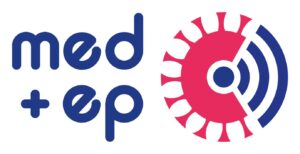
What is the relationship between technologies of communication and social and cultural change? This collaborative project between humanities researchers and art practitioners proposes to explore this question in the context of public health and illness. More specifically, it seeks to document, from historical and contemporary as well as trans-disciplinary and trans-regional perspectives, the role of media and technologies of communication in the making and management of epidemic outbreaks in Poland, Romania, the UK and India since the mid-twentieth century. Through its strong public outreach component, the project also aims to devise innovative educational tools that help to restore the memory of past pandemics to public consciousness and promote critical thinking about the intersections of public health, media and technology in the Digital Age.
The project employs an interdisciplinary methodology that draws on a combination of historical and literary approaches, including formulating the conceptual and theoretical framework and collecting and analyzing archival, printed and oral evidence in Poland, Romania, Hungary, India, the UK, Switzerland and the US. Moving beyond the ‘effect’ tradition of media research, it investigates the manner in which different groups of social actors have incorporated media and technology into communicative practices around epidemic outbreaks, in order to understand the form and content of the public health debates and communications thus mediated and locate these developments within a longer history of technological and medical innovation. We focus on five groups of social actors, some of whom have been central to epidemic responses, while others have found themselves at their periphery: 1) governments, 2) scientists, healthcare professionals and health activists, 3) media institutions and practitioners, 4) persons with disabilities, and) minorities, e.g. the Roma people and South Asian migrants. The project outcomes will be of interest to both academic and non-academic audiences, including historians, scholars from across the medical humanities, journalists, media and medical professionals, artists, vulnerable social groups, educators, students and parents.
CONSORTIUM:
- Project Leader: Sławomir Łotysz, Institute for the History of Science of the Polish Academy of Sciences, History of Technology Research Unit, Poland, e-mail
Amelia Bonea, University of Heidelberg, Heidelberg Centre for Transcultural Studies, Germany (in the role of Project Leader from November 2022-January 2023)
- Melissa Dickson, University of Birmingham, Literature, United Kingdom
- Irina Nastasă-Matei, University of Bucharest, Faculty of Political Science, Romania, e-mail
COOPERATION PARTNERS:
- Kai Tuchmann & Anuja Ghosalkar, Academy for Theatre and Digitality (Theater Dortmund) & Drama Queen
- Teatr 21, Performing artists
- Fragile Society, Performing artists
- Gareth Dickson, University of Oxford Department of Continuing Education
 Start date
Start date
1 November 2022
 Project duration
Project duration
36 months
 Project budget
Project budget
€ 1 418 897
Funding organisations
![]()
![]()
![]()
![]()